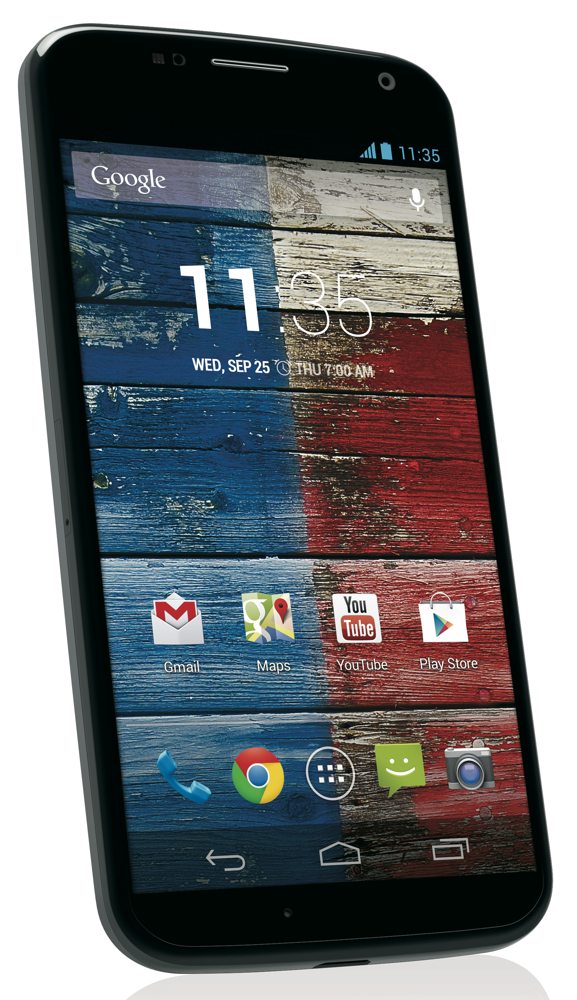History
Motorola is an American company with a lengthy history in the telecommunication field. It has contributed heavily to the mobile phone technology revolution that we are witnessing today. Prior to creating the first mobile phone, their maiden product was a "battery eliminator" that was created in 1928. In a short span of time, they had a diverse product category, and by the end of the first half of the 19th century, they were selling car radios, and television sets to the U.S market.
 |
| Motorola indicating its contribution to the space program |
In 1947, the company changed its name to "Motorola" from "Galvin
Manufacturing Corporation." It is a marriage between the words
"motor", which represent cars, and "Victrola", which was a
well-known gramophone brand at that period. Gradually, it became a popular
brand name in the U.S households. 10 years later, Motorola partnered with Ford
Motor Company and the Radio Corporation of America to create the eight track
player for cars.
The most significant event of Motorola's history could be its contribution to the Apollo space program. As a matter of fact, Apollo astronaut Neil Armstrong's famous message from the Moon was transmitted to earth by a radio that was designed by Motorola.
 | |
| DynaTAC |
 |
| StarTAC |
Despite its early success, Motorola was unable to keep up with the competition
after the dawn of the new century. It was rivaled by smartphone manufacturers
such as, Nokia, Samsung and Sony Ericsson. After Apple revealed the iPhone in
2007, Motorola was struggling to remain as the leader in its market. They tried to rejuvenate their obsolete mobile phone line up
with Android powered mobile phones, but they failed to gain the
edge. After its initial downfall, the company was losing market share. In 2011,
Motorola split in to two independent companies, and Motorola
Mobility was acquired by the tech giant Google.
Last year, Motorola announced its first phone after Google's acquisition. It was named Moto X, and it was marketed as "The only smartphone assembled in the U.S.A.". It offered new customizing options, and it also featured touchless controls that allowed users to navigate their Moto X with voice. Moreover, it was priced at $399 which was considerably less than any other smartphone in its category.
Unfortunately, Moto X was not a commercial success, due to its strong
competitors, and weak marketing tactics on Motorola's part. As a result of
that, Motorola was sold to Lenovo by Google
on January 29th of 2014. However, Motorola will remain as the pioneer of mobile
phone technology in regards to its immense contribution in the early days of
mobile technology.
 |
| Moto X |
Motorola's
Mission Statement
Motorola's mission statement is stated on their official website :
"Motorola created the mobile communications industry. We invented most of the protocols and technologies that make mobile communications possible, including the first mobile phone, the first base station, and most everything in between.
Today,
we are combining that pioneering spirit with Google’s vision and commitment to
consumers. That’s why our phones run on Android, the world's most popular
operating system. Android brings the openness that shaped the Internet to the
mobile world. That’s also why we are the first company to bring smartphone
production back to the USA and allow people to customize their own phone
design.
'For
the past 80 years, our engineers have thrived on invention, on finding new ways
to solve problems. We continue to look for new opportunities to change people’s
lives for the better through the magic of mobility."
It is apparent that the company has not made any changes to its mission statement after being acquired by Lenovo. Therefore, a change in the mission statement is possible in the near future.
Sources : Encyclopedia Britannica Inc.
Motorola.com
BBC: Google sells Motorola Mobility unit to Lenovo for $3bn
Google: Facts about Google’s acquisition of Motorola
New York Times: How the Destinies of Motorola and Palm Grew Apart
Motorola.com
BBC: Google sells Motorola Mobility unit to Lenovo for $3bn
Google: Facts about Google’s acquisition of Motorola
New York Times: How the Destinies of Motorola and Palm Grew Apart
No comments:
Post a Comment